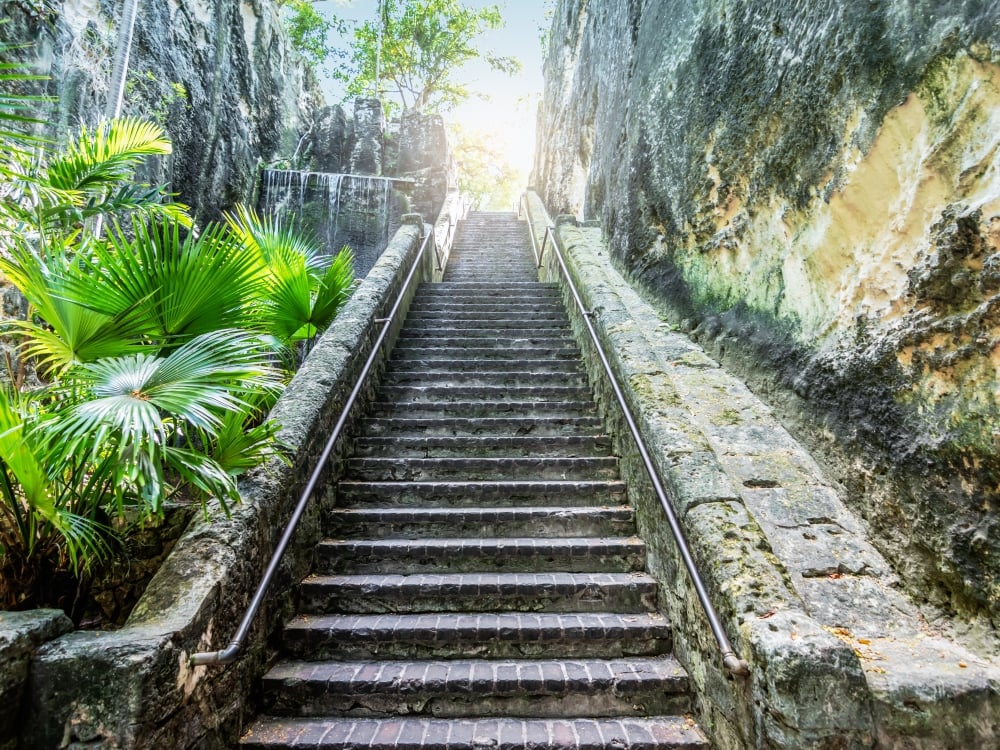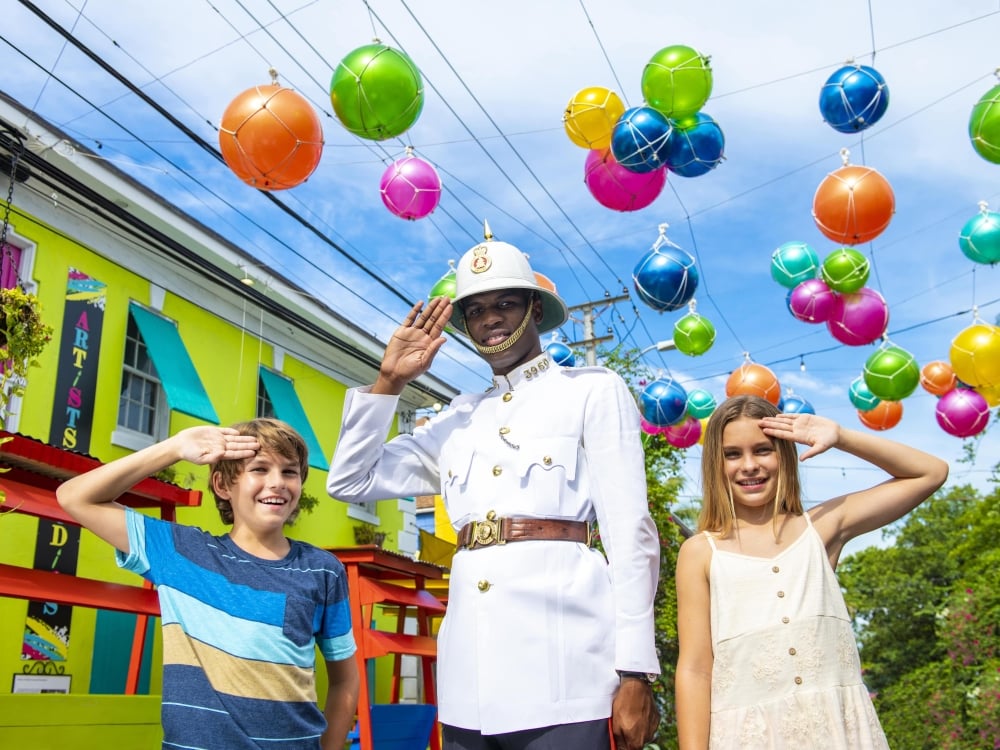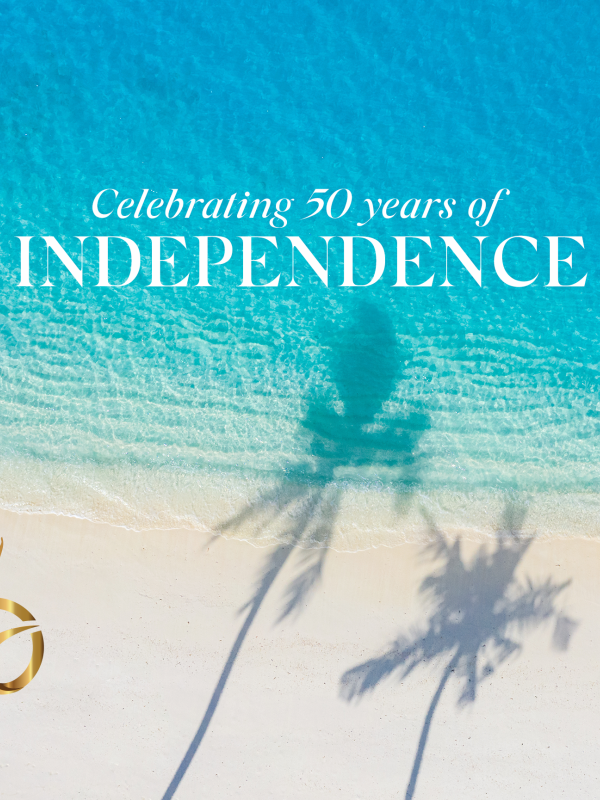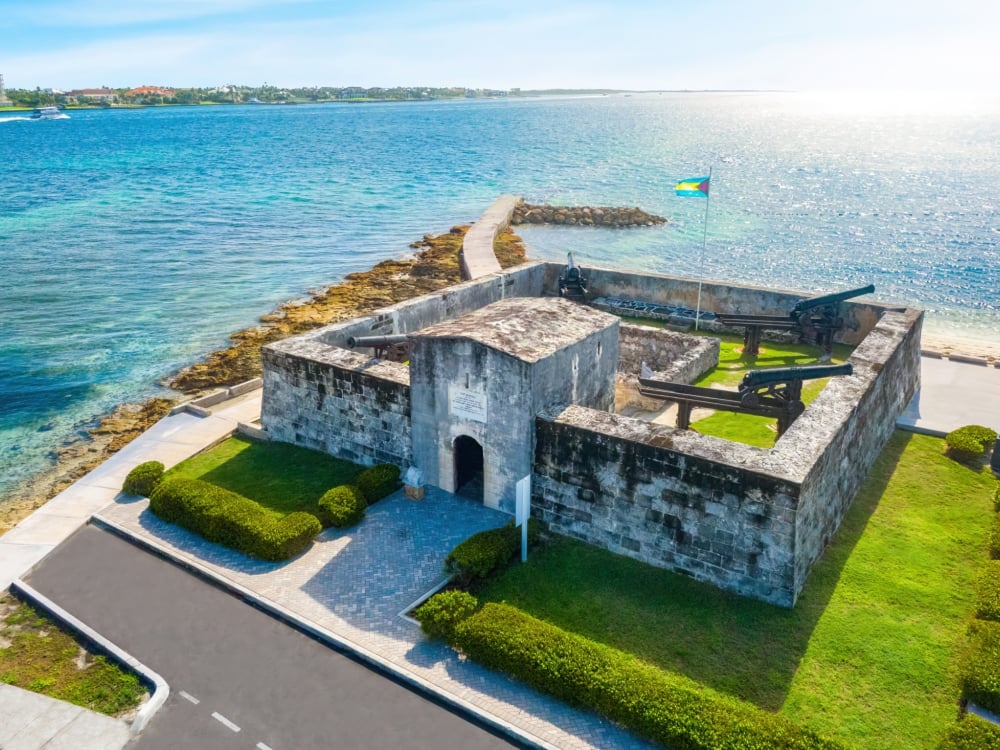Hidden among a group of islands poised between the Atlantic and Caribbean—and only a few hundred miles from the United States’ southern coast of Florida—Nassau & Paradise Island has sheltered everyone from pirates and freed slaves to blockade runners, rum smugglers and runaway lovers over the centuries. And although times are peaceful now, we still cherish a tradition of people making their own rules under sunny skies.

Gateway to the New World
The Bahamian island of Guanahani, traditionally identified as San Salvador, was Christopher Columbus’ first landfall in the New World. The original inhabitants of the island were the Lucayans, described by Columbus as a peace-loving people, beautiful and generous of heart.
Though Columbus claimed the island for Spain, the lack of gold here led the Spaniards to focus on settlements elsewhere in the Caribbean. In 1629, Charles I of England laid claim to the Carolinas and threw The Bahamas in for good measure, a grand gesture that would weave together two of the major influences on The Bahamas’ development—England and the American South.
Pirates’ Arrival
In 1648, William Sayles and his Eleutheran Adventurers (from the Greek word “Eleutheria” or “freedom”) landed briefly in Nassau Harbour during their search for a place to establish a Puritan colony. They then sailed south to today’s Eleuthera Island, where a reef called the Devil’s Backbone wrecked the Adventurers’ ship and chose their new home for them. The surviving Adventurers were the first English settlers in The Bahamas.
Back in Nassau (first established as Charles Town in 1666 and christened Nassau in 1695), wrecked ships became a livelihood for the city’s less religious-minded settlers. If bad weather and poor maps didn’t bring enough salvage ashore, the “citizens” of this outlaw settlement would put lights on the reefs to lure ships to their doom. Although the faraway English government did not approve of this rogue activity, they did put a seal of approval on the beginnings of piracy.
During the 17th century, England was constantly at war and the Royal Navy had its hands full, so a Letter of Marque was given to sea captains called “privateers”, which allowed them to attack enemy ships. Piracy quickly became rampant, a “Privateer’s Republic” was established in Nassau, and Edward Teach, better known as Blackbeard, declared himself Nassau’s magistrate. Calico Jack Rackham, Anne Bonney and Mary Read were among many infamous pirates based here.
When England signed treaties with its enemies, the privateers (who had far exceeded the limits of their Letter of Marque) officially became outlaws. In 1718 their republic came to an end when England sent Governor Woodes Rogers to Nassau, armed with three warships and the motto Expulsis Piratis – Resituta Commercia (Pirates Expelled – Commerce Restored).
While pirates have long since moved on from our shores, visitors today can explore the Golden Age of Piracy at the Pirates of Nassau Museum or raise a pint at Pirate Republic Brewing Company.
The Loyalists
The Bahamas then became an English royal colony and during the American Revolution many Loyalists fled here, some of them bringing slaves from plantations in the Carolinas. But plantations never became a successful way of life on the islands, and in 1807—when England’s Parliament banned the slave trade—the Royal Navy intercepted many slave ships bound for America and the captured West Africans were set free here. Nassau’s Over-the-Hill district was first established as a settlement for liberated West Africans. By the time Parliament declared general Emancipation in 1834, about three-quarters of the Bahamian population was from West Africa.
During the American Civil War, privateering experienced something of a resurgence. England and Nassau defied the North’s blockade and continued to trade with Southern states. In the famous Civil War novel Gone with the Wind, Rhett Butler is a well-known man about town in Nassau. Later, during Prohibition, Nassau defied the U.S. again and did a lively business smuggling liquor into Southern ports, until President Roosevelt repealed the “unfortunate amendment”.
In the 1940s, King Edward VIII gave up his throne to marry “the woman I love” and settled in Nassau. The new couple, known as the Duke and Duchess of Windsor, began a new era of peaceful glamor here, attracting an ever-increasing number of visitors, celebrities and famous figures to our islands.
Independence
In 1953, young politician Lynden Pindling, who had grown up in Nassau’s West African Over-the-Hill district, formed the Progressive Liberal Party, which 20 years later led the nation to vote for independence from England. Our island still retains strong ties to England, choosing to remain within the Commonwealth and to declare allegiance to the Queen. At Nassau’s Government House, official residence of the Governor-General, you can watch the Changing of the Guard twice a month or on the last Friday of each month, enjoy a traditional English Afternoon Tea with the Governor’s wife. July 10, 2023 marked 50 years of independence for The Bahamas!

Islands of Song
Musical traditions here reflect both the impact of history on the islands and a homegrown, distinctively national character. All through the islands of The Bahamas, music is woven deeply into the fabric of daily life—so much so that one of the nicknames given to our archipelago is “the Islands of Song”.
Blues and spirituals made their way down from the American South and took on a Bahamian flavor, in breezy seaside church choirs where rhyming spirituals are sung, and on homemade guitars in the hands of virtuoso performers like the legendary Joseph Spence and his contemporary Israel Forbes.
Junkanoo, goombay and rake ‘n’ scrape all incorporate the handclapping and drum rhythms of West African dance music. Goombay is a secular Bahamian tradition, danceable music full of stories about love and other daily dramas. Rake ’n’ scrape bands are purely instrumental: a carpenter’s saw, a goatskin drum and an accordion are all traditional rake ’n’ scrape instruments. And the “gran’ dance” of Junkanoo is, of course, the heart of our annual national celebration. Competing dance groups — like the Valley Boys, the Music Makers and the Saxons Superstars—spend all year creating fanciful costumes and practicing elaborate routines. If you can’t be here for the holidays around Christmas and New Year’s Day, a number of local venues feature Junkanoo performances or visit the Junkanoo Edu-Culture Museum.

True Bahamian
Given The Bahamas’ historic and multicultural background, it’s no wonder that Bahamian English is a fascinating mixture of Queen’s diction, African influences and island lingo. Unfamiliar sounding words you’ll hear on our streets and beaches may be survivors from early English settlement (true Shakespearean English), echoes of Africa or local slang. The “h” is often dropped in daily speech (’ouse for house or t’anks for thanks). You’ll find conversation easy here. The distinctive sounds of daily speech are all part of a true Bahamian experience.


